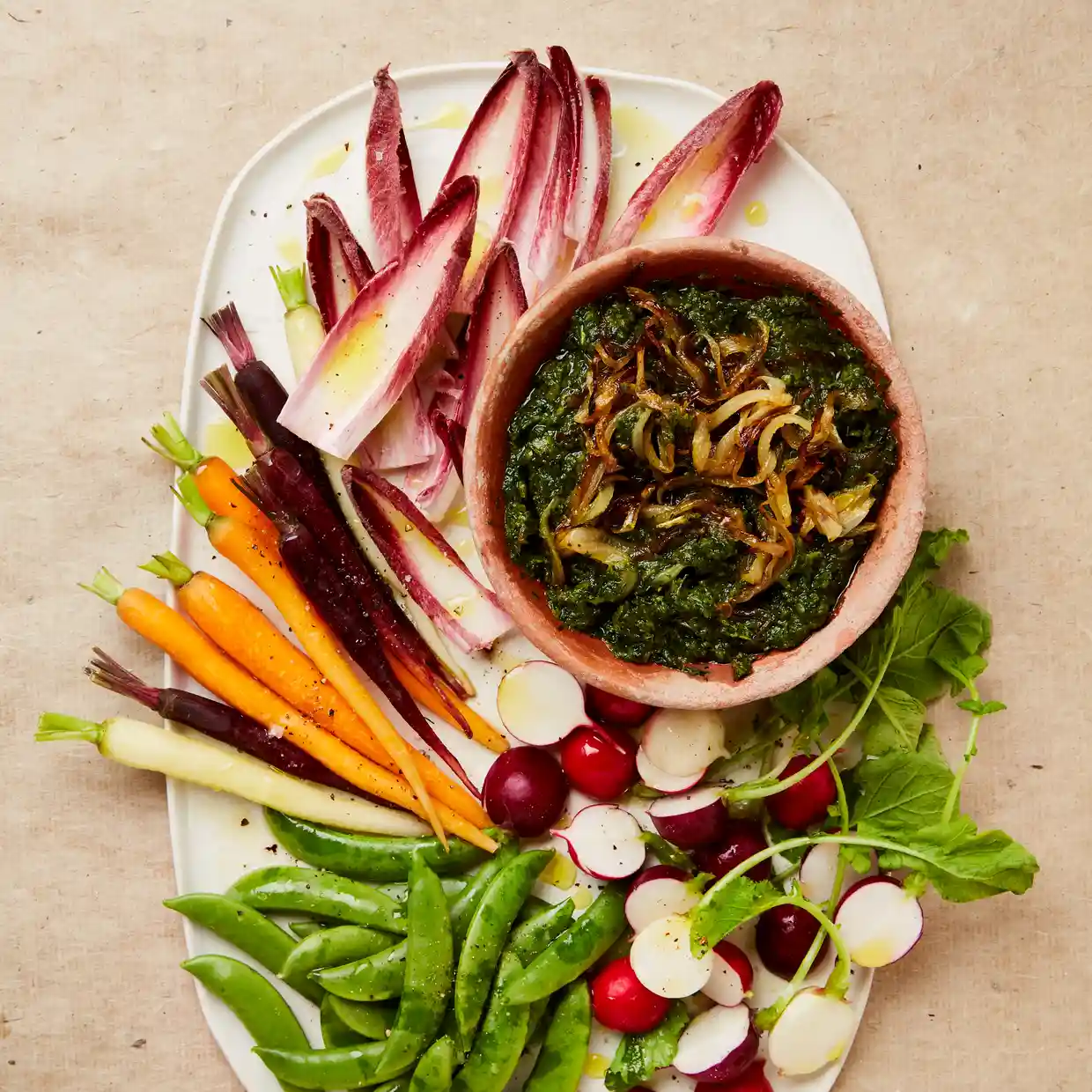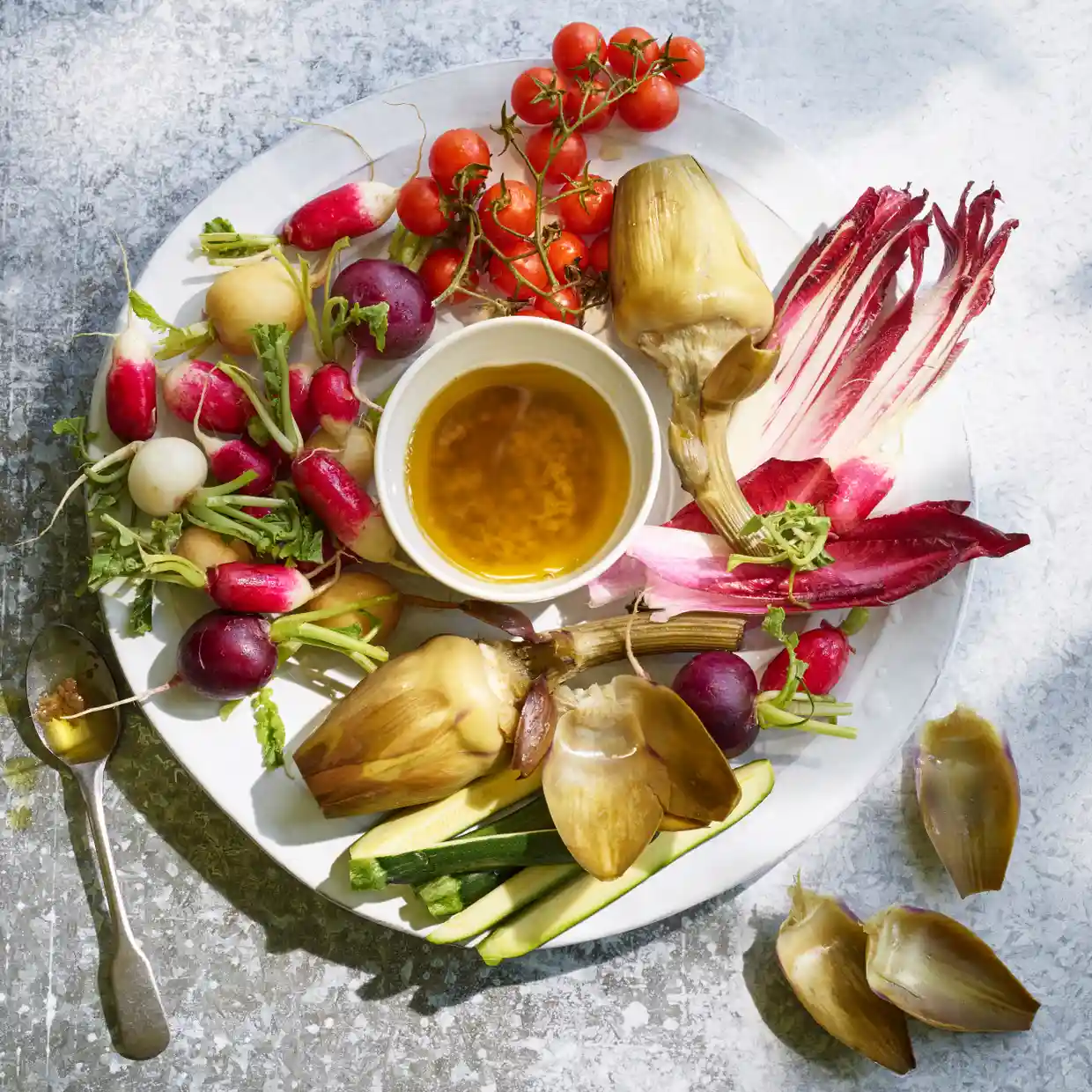Hot sauce - or is it a bath?
- rosemary
- Oct 17, 2023
- 5 min read
"it is a dish which essentially needs the accompaniment of plenty of strong coarse red wine, such as the local Barbera. It is also excessively indigestible, and is indicated only for those with very resistant stomachs. For garlic eaters it is, of course, a blissful feast." Elizabeth David

We are talking about Bagna cáuda here - a kind of dip which is fundamentally just garlic, anchovies and olive oil. It's a dish that is native to Piedmont and also to Provence, which is right next door, and at one point under the same rulers. As this wonderful old photograph from my 'vintage' Time/Life book of the food of Italy, shows they take Bagna Cáuda very seriously there. The name is from the Piedmontese dialect and translated means hot sauce or gravy - not hot bath as many say. Bath is ' il bagno' not 'la bagna'. Although obviously the two are related.
Piedmont has no coastline:
"So how did these salty little fish become so central to Piedmontese cooking? Theories abound, but the most likely one has to do with salt itself. Once a valuable commodity, salt was heavily taxed along its trade routes. To skirt those taxes, some merchants began packing their salt under layers of salted anchovies—if a government agent cracked open the barrel, they'd see the anchovies and wave them through without demanding the salt tax." Daniel Gritzer/Serious Eats
It's not just bagna cáuda in which you find anchovies in Piedmont. There's also Vitello tonnato and salsa verde and probably lots of other less well-known dishes too. When you think about it the tuna in the Vitello tomato is even more of a surprise for a land-locked region. However, whatever the initial reason for anchovies finding their way into Piedmont, eventually they became one of the signature ingredients in Piedmontese cooking:
"This activity brought salted anchovies to Piedmont, where they became a kitchen staple. Eventually this led to a whole new, more legitimate salted-anchovy industry there. Each year after the summer harvests were finished, poor farmers from Piedmont's Maira Valley would trek to the Ligurian coast to load up carts with salt-packed anchovies. Then they'd return, trundling to every town and village in Piedmont all winter long, selling their crates of preserved fish. The practice was widespread until World War II, when motor vehicles put most of those roving acciugai—anchovy merchants—out of business." Daniel Gritzer/Serious Eats

As you can tell, Daniel Gritzer's recipe and his accompanying article is my sort of top pick here. Well not only did he talk about the origins he also explained the process and the best ways to tackle it. Somewhat along the lines of Felicity Cloake I guess. In addition he tries to explain the charm of something, which, at first glance would seem almost repulsive - I mean - vast quantities of garlic and anchovies together?
"The oddness of bagna càuda strikes on two levels. First, the idea of it is just plain weird—a salty and pungent dip, loaded with obscene amounts of garlic and anchovy. It's difficult to imagine who first thought to cook heaps of those two potent ingredients together into a brown and oily sludge, but that person should have a holiday named after them, because, as unlikely and off-putting as the initial idea seems, the result is undeniably delicious. ... It blends one of the sea's most assertive flavors with one of the most pungent of the earth—garlic, and lots of it. They cook down together in olive oil until they form a thick mash whose components can't be teased apart, by sight or taste." Daniel Gritzer/Serious Eats
His article is longish, as are others, but the recipe at the end is pretty simple, although not quite as simple as Elizabeth David's:
"3oz each of olive oil, butter, anchovies and garlic. Heat the butter and the oil, put in the anchovies cut in pieces and the garlic finely sliced. Simmer for 10 minutes. ... Sliced white truffles are sometimes added to the sauce, and occasionally, even cream as well" Elizabeth David

I should, at this point, explain that I am talking about bagna cáuda today because this is a first recipe post - and this is the next book on my shelves - the late Mietta (O'Donnell's) Italian Family Recipes. The lady died tragically in a car accident, not all that long after she had retired from running her famous and marvellous restaurant in Melbourne. If you are interested in the history of the Melbourne Italian restaurant families of which she was a part - in spite of that Irish surname - then this is the book for you. It is illustrated not by photos of the food, but by old photographs such as the one on the cover of the people who began Melbourne's love affair with all things Italian. All the classic recipes are here, and also some family ones but honestly it's not a book I turn to very often. Possibly if I had come across it when I was still learning to cook then it may have become one of my bibles, falling apart in my hands, like Elizabeth David's books. I am tempted to put it in the street library where somebody might find it and treasure it. But I would feel guilty about that. Her restaurant was so wonderful, that I imagine the food described in these recipes is too. I should make myself try something. Maybe I should start with Bagna cáuda - I don't think I have ever eaten it. I would serve it at our next family gathering but I know for a fact that there are several anchovy haters in the mix. So probably better to try something else.
But back to Bagna càuda. One writer said that you needed a crowd to properly enjoy this. I guess it's a little like le grand aioli in that respect. Apparently in Asti - one of the beautiful Piedmontese towns - they celebrate the dish with a series of special days in November and December and the photograph below is of one of those celebrations.

And I realise now that I have not mentioned that the 'hot' part of the name does not, in this instance, refer to chillies but to the fact that it should be served hot - or at least warm. In some places it is put in a bowl over a candle flame - a bit like a fondue. Into this you dip your crudités - well whatever you like really.
So to wind up, here are a few different versions, including an inevitable Ottolenghi dish, which is not really Bagna cáuda at all as it is packed with herbs and spices, so that, delicious though it might be is't not really Bagna cáuda. A step too far I think to really deserve the name. The others vary a bit but basically they are just that holy trinity of anchovy, garlic and oil. Ottolenghi first, then delicious.; two versions from Richard Olney - one of these is just a photograph from my Provence the Beautiful Cookbook; and last of all one from Gourmet Traveller - which is very pretty. As you can see - bitter things like radicchio are popular for dipping. But really you could try anything, depending on the season.
And yes they have retained the Piedmontese name in Provence, but without the accent I think.

So here's to Mietta. A life tragically cut short.
The first words of her Introduction to the book are therefore somewhat poignant.
"Running a restaurant means you seldom eat at home. Nor do you stop running long enough to pause to reflect on who and what you are and who helped you get there."
Mietta O'Donnell











Comments